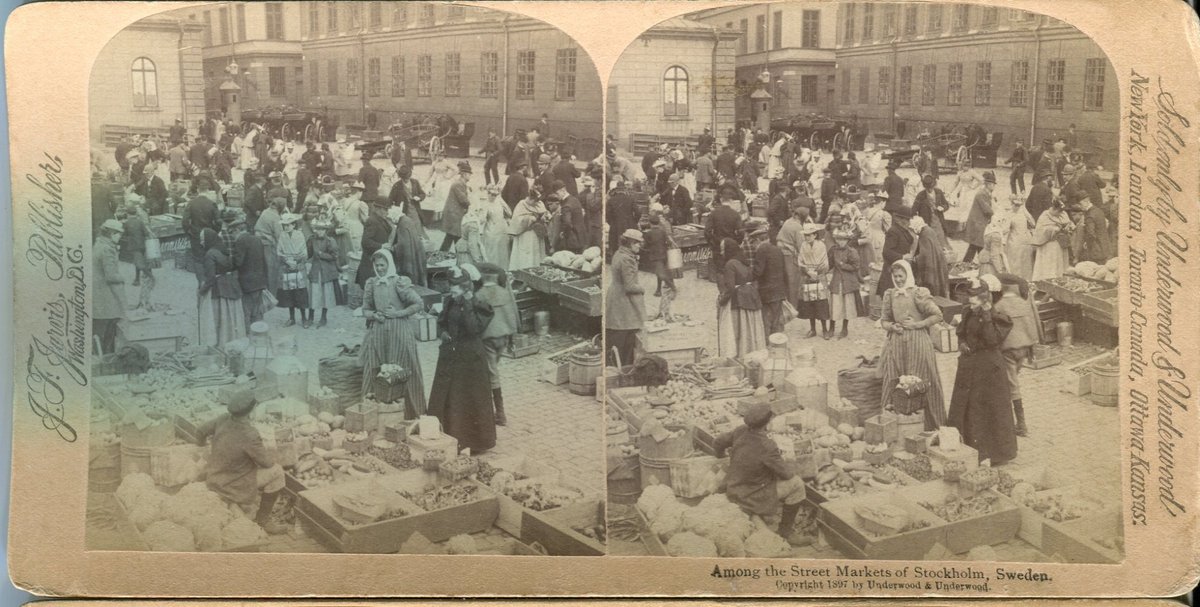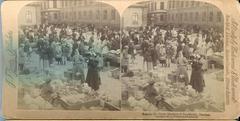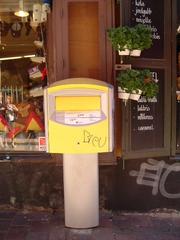
Gamla Stan Stockholm: Visiting Hours, Tickets, and Historical Sites Guide
Date: 14/06/2025
Introduction
Nestled in the heart of Sweden’s capital, Gamla Stan—Stockholm’s Old Town—stands as one of Europe’s best-preserved medieval city centers. Its cobblestone streets, vibrant ochre and red facades, and iconic landmarks like the Royal Palace and Storkyrkan (Stockholm Cathedral) offer an immersive journey through centuries of Swedish history and culture. Today, Gamla Stan is not only a living museum but also a thriving neighborhood with cafés, artisan shops, museums, and festive events that celebrate Swedish traditions alongside modern city life.
This guide provides detailed insights into Gamla Stan’s history, visitor information, travel tips, annual events, and nearby attractions. Whether you’re intrigued by the dramatic Stockholm Bloodbath, the regal Royal Palace, or the festive Christmas Market at Stortorget, you’ll find all the practical information needed to plan your visit.
(Official Stockholm Tourism, Campervan Sweden, Stockholm Museum)
Table of Contents
- Introduction
- Early Origins and Foundation
- Medieval Development
- Renaissance and Early Modern Era
- Urban Planning and Architectural Evolution
- Decline, Neglect, and Revival
- Cultural Significance and Living Heritage
- Visiting Gamla Stan: Practical Information
- Key Historical Events and Landmarks
- Annual Events and Festivals
- Frequently Asked Questions (FAQ)
- Summary & Recommendations
- References
Early Origins and Foundation
Gamla Stan, meaning “The Old Town,” marks the site where Stockholm was founded. Archaeological findings indicate settlement as early as the late Viking Age, around 970–1020 CE (Official Stockholm Tourism). Legend has it the city’s placement was decided when a log filled with gold drifted from Sigtuna, landing on what is now Stadsholmen. The location was ideal for trade and defense, sitting at the junction of Lake Mälaren and the Baltic Sea.
The name “Stockholm” (from “stock” for log and “holm” for islet) originally referred to Gamla Stan itself. The first written mention dates to 1252, marking the official start of Stockholm’s history.
Medieval Development
By the 13th century, Gamla Stan had evolved into a bustling medieval town with narrow, winding alleys and North German-influenced architecture. The city was enclosed by walls and centered around Stortorget, the main public square. The Gothic-style Stockholm Cathedral (Storkyrkan), established in the 13th century, remains a key architectural treasure. Stortorget became the heart of commerce and social life, gradually surrounded by permanent buildings following a 15th-century fire.
Renaissance and Early Modern Era
During the 16th and 17th centuries, Gamla Stan witnessed major political and architectural changes. The infamous Stockholm Bloodbath of 1520, where Danish King Christian II executed over 80 Swedes, became a pivotal event in the nation’s history. The district’s status as the administrative and royal center was cemented with the construction of the new Royal Palace in the 18th century, following the destruction of the Tre Kronor Palace in 1697. Other significant sites from this era include the House of Nobility (Riddarhuset) and Riddarholmen Church, the royal burial ground.
Urban Planning and Architectural Evolution
Gamla Stan’s urban design was influenced by North German models, notably Lübeck. While some expansion was planned, much of it grew organically. The 17th century saw modernization efforts, including the creation of broader thoroughfares like Stora Nygatan and Tyska Brinken, transforming Gamla Stan from a fortified medieval town to a more open capital city.
Decline, Neglect, and Revival
By the mid-19th century, as Stockholm expanded, Gamla Stan was viewed as outdated and deteriorated. Post-WWII, some areas were demolished for government expansion. However, from the 1970s onward, restoration efforts revived Gamla Stan’s historic beauty. Today, it is recognized for its colorful facades, ornate details, and as one of Europe’s most authentic medieval city centers.
Cultural Significance and Living Heritage
Gamla Stan is both a historical district and a vibrant community of about 3,000 residents. Its cafes, museums, shops, and annual events make it a living part of Stockholm’s cultural fabric. Key sites like the Nobel Museum and Storkyrkan continue to play important roles in Sweden’s intellectual and spiritual life.
Exploring Gamla Stan: Visitor Information
Visiting Hours
- Gamla Stan District: Open 24/7 as a public area.
- Royal Palace: Daily, generally 10:00 AM–5:00 PM (seasonal variations).
- Stockholm Cathedral (Storkyrkan): Usually 9:00 AM–5:00 PM.
- Nobel Museum: Daily 11:00 AM–6:00 PM.
- Riddarholmen Church (summer): Tues–Sun, 10:00 AM–4:00 PM.
Always check official attraction websites for current hours.
Tickets and Admission
- Royal Palace: Adults SEK 160; children under 18 free; discounts available.
- Nobel Museum: Adults SEK 130; reduced SEK 90; children under 18 free.
- Storkyrkan: Entrance free; donations appreciated.
- Riddarholmen Church: Adults SEK 50–60; children free.
Many attractions offer combination tickets and guided tours.
Accessibility
Gamla Stan’s medieval streets can be uneven and narrow. Major attractions strive for accessibility, with ramps and elevators where possible. Plan ahead and consult individual sites for detailed accessibility information.
Guided Tours & Special Events
Guided walking tours are available year-round, including historical, ghost, and themed food tours (City Guide Stockholm). Themed events and festivals, such as the Christmas Market at Stortorget, are annual highlights.
Getting There & Nearby Attractions
- Public Transport: Gamla Stan Metro station; buses and ferries also serve the area.
- Nearby: Vasa Museum, Skansen, Södermalm’s trendy neighborhoods, and the waterfront.
Key Historical Sites and Landmarks
- Stortorget: Stockholm’s oldest square, site of the Stockholm Bloodbath.
- Royal Palace: Baroque masterpiece and royal residence.
- Storkyrkan (Stockholm Cathedral): Center of royal and national ceremonies.
- Riddarholmen Church: Royal burial site.
- House of Nobility (Riddarhuset): Historic political center.
- Mårten Trotzigs Gränd: Stockholm’s narrowest street.
Annual Events and Festivals
- Christmas Market at Stortorget: Late November to December. Traditional crafts, food, and festive music (Visit Stockholm).
- Midsummer: Folk music, dance, and floral crowns in June.
- Stockholm Culture Festival: August, with free concerts and art (My Guide Stockholm).
- Parkteatern: Outdoor theater and concerts, May–September.
- Museum Night (April): Free late-night museum access and special programs.
- Changing of the Guard: Daily ceremony at the Royal Palace, especially popular in summer.
Many events are free; some, like special tours or concerts, may require tickets. Booking in advance is recommended during peak periods.
Dining, Shopping, and Staying in Gamla Stan
- Dining: Historic taverns like Den Gyldene Freden, modern bistros, and cozy cafés for fika (try kanelbullar).
- Shopping: Artisan boutiques on Västerlånggatan and Österlånggatan sell Swedish handicrafts, design objects, and souvenirs.
- Accommodation: Boutique hotels and guesthouses in historic buildings; book in advance for peak seasons.
Practical Tips
- Currency: Swedish krona (SEK); cards widely accepted.
- Language: Swedish, but English is fluently spoken.
- Stockholm Pass: Offers discounted entry to attractions and public transport (Mapping Megan).
- Restrooms: Public toilets available, often for a small fee.
- Wi-Fi: Free in most cafés, hotels, and public spaces.
- Luggage Storage: Services available near Gamla Stan (Qeepl).
- Safety: Low crime rates; remain vigilant for pickpockets in crowds (Expatriate Consultancy).
- Weather: Dress in layers; weather can be changeable.
Frequently Asked Questions (FAQ)
Q: Do I need tickets to visit Gamla Stan?
A: No ticket is required to enter Gamla Stan itself. Tickets are needed for museums and the Royal Palace.
Q: What are the main attractions’ visiting hours?
A: Most sites open around 10:00 AM, closing between 4:00–6:00 PM; always check official websites.
Q: Is Gamla Stan accessible for wheelchair users?
A: Main streets are accessible, but cobblestones and steps can be challenging. Key attractions provide accommodations; plan ahead.
Q: Are guided tours available?
A: Yes, a wide variety of guided tours are offered in multiple languages.
Q: When is the best time to visit?
A: Spring and autumn have fewer crowds; winter is magical during the Christmas Market.
Summary & Recommendations
Gamla Stan offers an enriching blend of medieval charm, vibrant cultural life, and modern convenience. Walk its atmospheric streets, visit historic landmarks, enjoy Swedish fika, and engage with annual festivals. For updated information on visiting hours, tickets, and events, use official resources and the Audiala app.
Quick Tips:
- Book tickets online for popular sites.
- Arrive early to avoid crowds.
- Dress for the weather and wear comfortable shoes.
- Respect the historic environment and local customs.
References
- Gamla Stan Visiting Hours and Historical Guide: Official Stockholm Tourism
- Exploring Gamla Stan: Campervan Sweden
- Stortorget and Gamla Stan Overview: Stockholm Museum
- Comprehensive Guide: Mapping Megan
- Annual Events and Festivals: My Guide Stockholm
- Top Things to Do: The Tour Guy
- Safety and Accessibility: Qeepl, Expatriate Consultancy
- Dining & Local Tips: Secret Stockholm, Destination Well Known
For further details, explore Visit Stockholm’s official website and download the Audiala app.






































































































































































